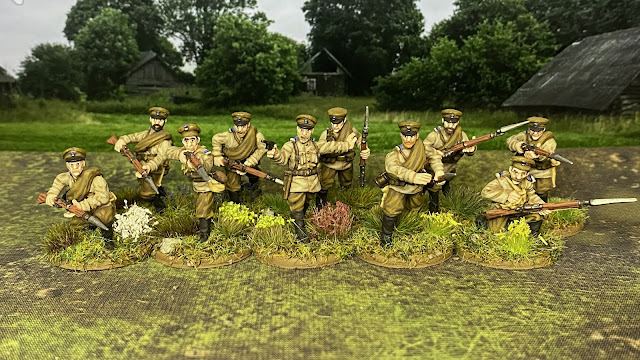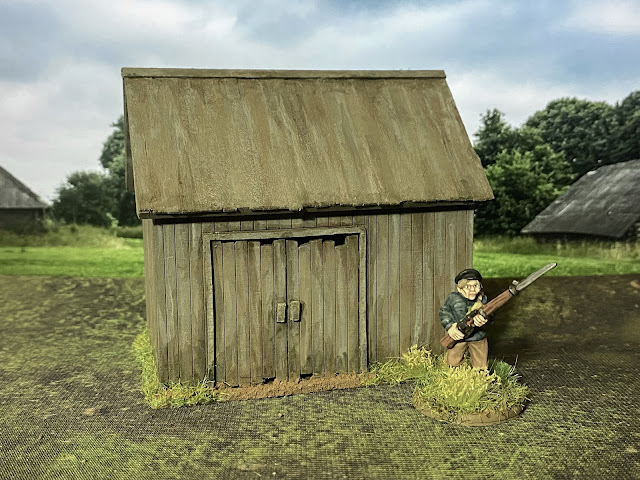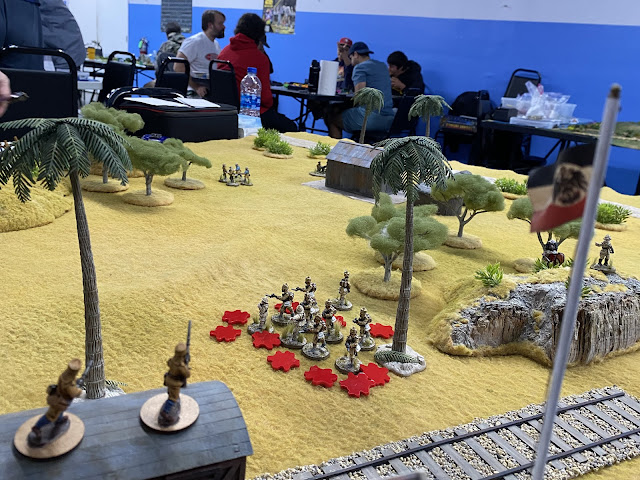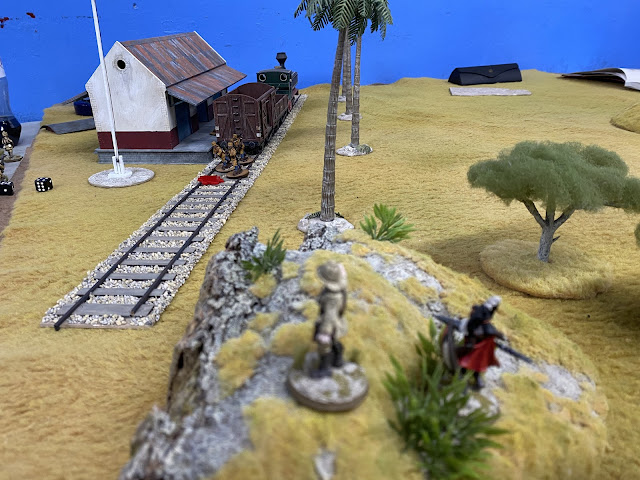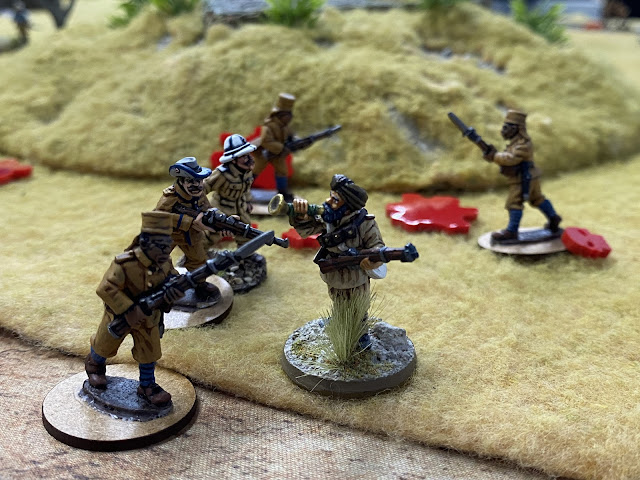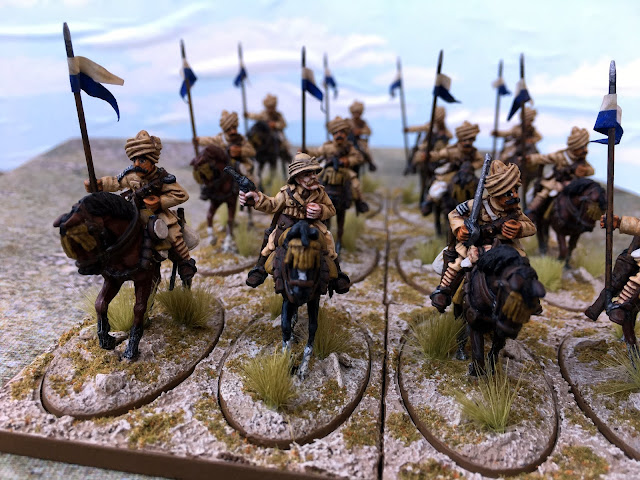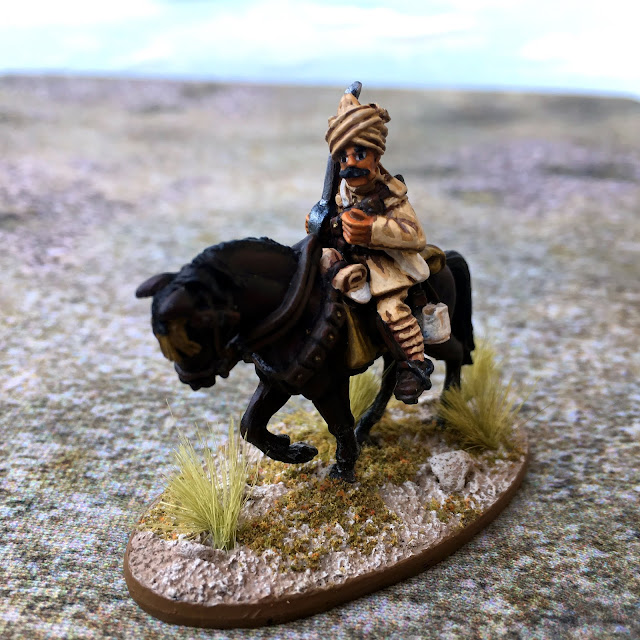Construction for my Baltic Independence Wars project has come to a close with the last few units and bits of terrain.
First up are a unit of Astrakhan Cossacks painted as part of Bułak-Bałachowicz's Mounted Partisan Detachment. These were painted using the plate in Osprey's " Armies of the Baltic Independence Wars 1918-20" as reference. I really like these Copplestone miniatures, but wish more than two horse poses were available. They are a little larger than my Great War Miniatures German cavalry, but I don't think it looks too egregious on the table.
Next are an Estonian machinegun team and a Latvian medic. The machinegun team is by Empress and actually comes with four figures. However, all my other machinegun teams for this era have three figures, so I elected to move the fourth figure to my artillery team. The stand for the machinegun was a little challenging to assemble, but I think I was able to hide the worst of my sins in the basing. The medic was assembled from the Wargames Atlantic plastic Great War Russian kit, with the addition of an armband I made from some thin plastic.
Estonian artillery team with spotter. This M1910 Howitzer is by Empress and I've added the standing officer from their machinegun team. Looking at photos of surviving examples, they have been painted in a variety of greens; not knowing what was period correct, I've gone with just a general drab green. The observer is another Wargames Atlantic figure. There are no binoculars in the Russian set, so I used a pair from the WA Germans and created a neck strap from the German gasmask strap.
The final unit is a resin Russian pattern Austin Armored Car from Empress. According to this Russian site, the Latvians received a captured Red Army Austin in 1919 that was renamed "Zemgaleetis." It went through a few different paint schemes during its service, but I'm hoping I have the correct one for the war. For the logo, I made some decals at home; They aren't the best quality, but still look better than what I could accomplish by hand. The resin casting was pretty good, but the kit arrived with the rear fenders broken. I had to rebuild them from the remaining fragments, some plasticard, and some brass rod for the rivets. The other major challenge with the kit is there are no registration marks for the front fenders and wheels, and the two turrets. I ended up gluing some of the parts into positions that I thought were correct, but didn't fit with the other parts; So had to break them off the kit and rebuild. This resulted in some damage to the car (one of my my turrets is now a little lopsided and I had to remake some of the rivets), but I'm hoping its not too noticeable.
I also finished up a few more village buildings for the battlefield. These are MDF kits from Things from the Basement's Russian Village line. Overall, I really like these kits. The MDF for the the main structural elements is thicker than the equivalent Sarissa Precision kits, though I did manage to break a few of the the thinner decorative elements during the building process. My one complaint would be the sizes of the doors on the kits; They come in around 30mm high, so look short with 28mm figures.
The izba log cabins come in a set of two and are very easy to assemble (you can download instructions from the company site). The only modifications I made to the kits were to add some additional wood strips to the roof peaks in order to hide the gaps.
A dacha cottage house. I added some card strips to the roofline to hide the gaps. No base is included with this kit, so you're limited in how much additional basing detail you can add.
And with that, I just need to talk someone into a game so I can get everything on the table.









